It’s one of the most exciting times to be alive when it comes to space exploration. For starters, we are finally going back to the Moon and will get to experience it in much greater detail than ever before. This got me thinking about what agencies like NASA, ESA, or ISRO have planned in the next 5 or even 10 years.
After some research, here are some space missions I am excited about. Let’s jump into it!
- NASA (National Aeronautics Space Administration)
- ESA (European Space Agency)
- ISRO (Indian Space Research Organization)
Future NASA Missions
ICON (Ionospheric Connection Explorer) – 2019
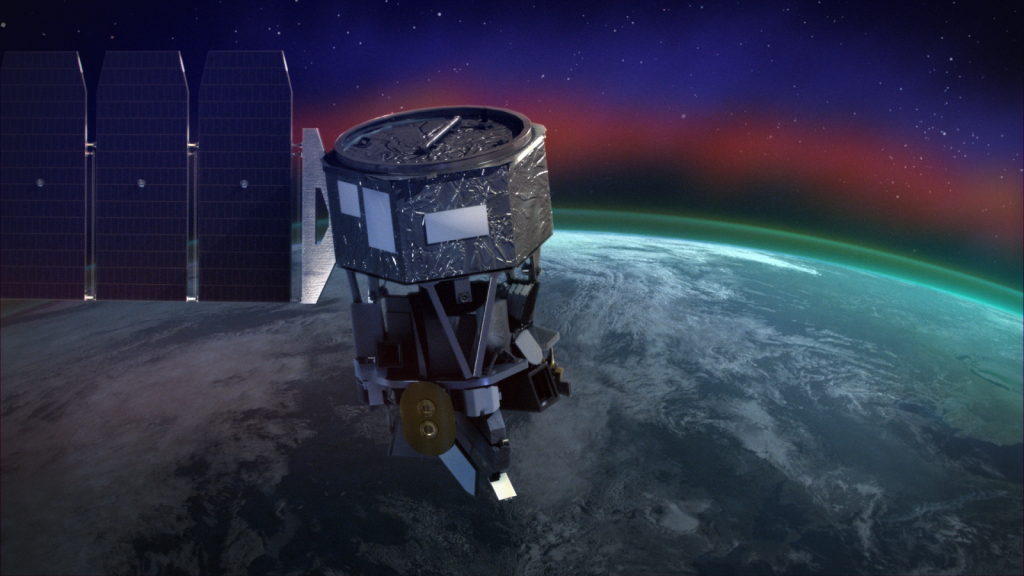
Here’s a mission that happened recently. This is NASA’s ICON mission or the Ionospheric Connection Explorer. The ICON mission will study where space weather and Earth weather meet. What’s interesting is this mission will orbit even higher than the ISS! The reason they’re studying this area is the ionosphere can be disruptive to radio and communication satellites. Understanding how this all works will help us adapt and improve space exploration and communication.
Learn more here: https://www.nasa.gov/icon
Artemis 1 – 2020

Credit: NASA
Going to Mars is a big deal but before we do that the U.S wants to get to the Moon first. Enter the Artemis mission. The mission will feature the Orion Spacecraft which will be blasted off by the humungous Space Launch System or SLS rocket. Artemis 1 is the first uncrewed mission for the Orion Multipurpose Crew Vehicle to be launched on the first flight of the Space SLS. It’s speculated that the launch date will be sometime after June 2020.
Learn more here: https://www.nasa.gov/artemis
Mars 2020 Rover – July 2020
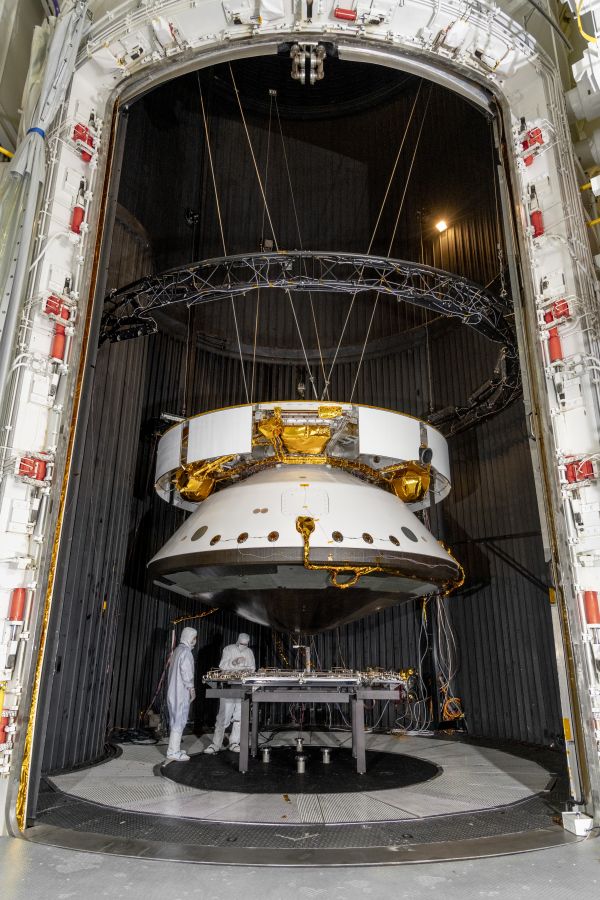
Credit: NASA/JPL
As you will learn about future space missions is that there is no shortage of Mars missions. Mars 2020 is the next-generation rover to explore and answer more questions around life on Mars. It’ll gather information to answer if there were any past microbial life on Mars. It will even paint a clearer picture of what the environment was like.
Mars 2020 rover has a drill that not only will collect samples but be able to drill further down and get core samples. This means we’ll get to study rock from millions of years or more ago. This mission is scheduled to launch in July 2020. Furthermore, NASA is thinking about sending a follow-up mission to retrieve all the samples from Mars 2020 rover. Exciting times!
Learn more here: https://mars.nasa.gov/mars2020/
James Webb Space Telescope (JWST) – 2021
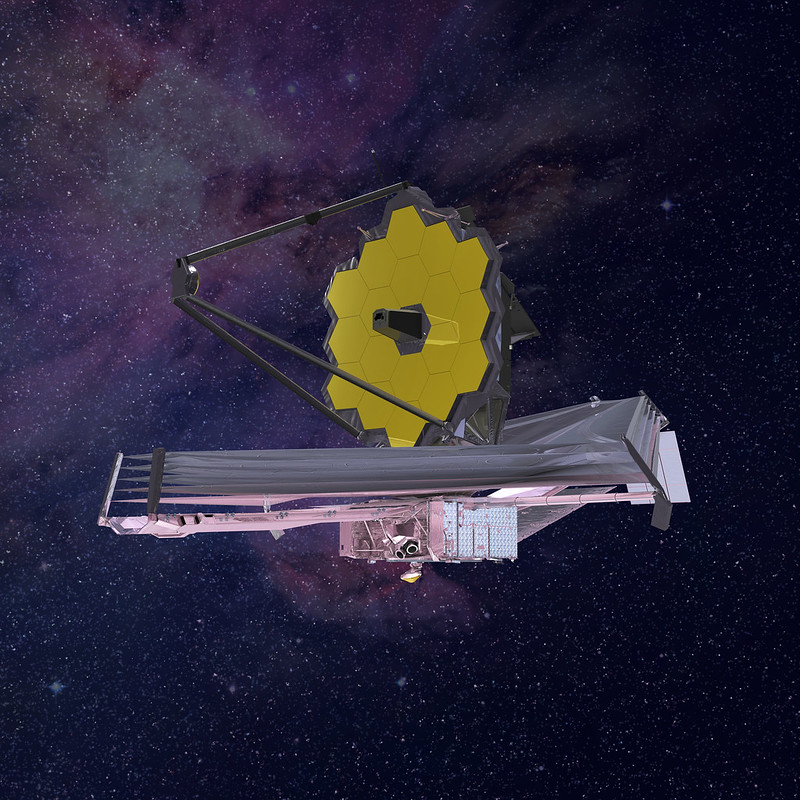
Credit: NASA
The James Webb Space Telescope or the JWST is probably one of the most anticipated upcoming missions. This telescope will succeed the infamous Hubble Space Telescope. It’ll see further than Hubble which means we’ll get to see the first galaxies born into the universe. The reason why we can see further is that Hubble takes photos primarily in optical wavelengths. Looking in those wavelengths can only see so far, which means if we switch into looking in infrared wavelength we can see even further back. JWST will be infrared dominant. The entire telescope is about as large as a tennis court and the mirror is much larger. That allows JWST to capture more light and see even more detail. This mission has been a hot topic because it’s gone over budget and delayed. Nonetheless, the world cannot wait for what cosmic findings await for us.
Learn more here: https://www.jwst.nasa.gov/
Lucy Mission – October 2021
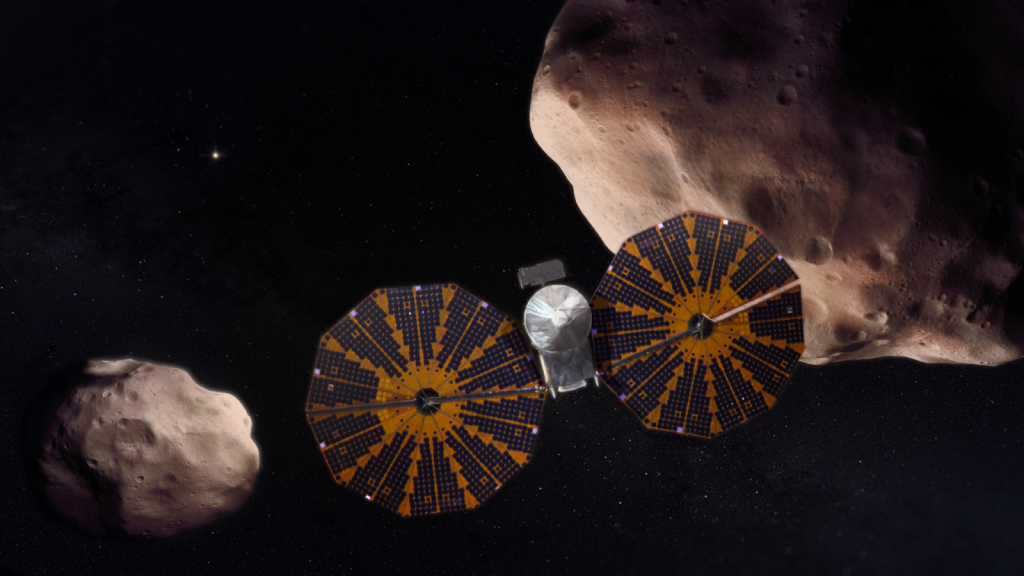
Credit: Credit: NASA’s Goddard Space Flight Center/Conceptual Image Lab/Adriana Gutierrez
NASA isn’t just looking at Mars, of course, the solar system is teeming with objects to study. In fact, around Jupiter are asteroids called “Trojan Asteroids.” These asteroids follow Jupiter around and hold vital clues to the early solar system. The program director and chief scientist in SwRi’s boulder office put it this way: “Because the Trojans are remnants of the stuff that formed the outer planets, they are literally the fossils of planet formation. Lucy, like the human fossil for which it is named, will revolutionize the understanding of our origins.” The Lucy mission will study these 6 worlds over its 4,156-day mission. Fun fact, this mission’s name was also influenced by the Beatles song called “Lucy” which of course influenced the original fossil name that we refer to as “Lucy.”
Learn more here: http://lucy.swri.edu
Psyche Mission – 2022
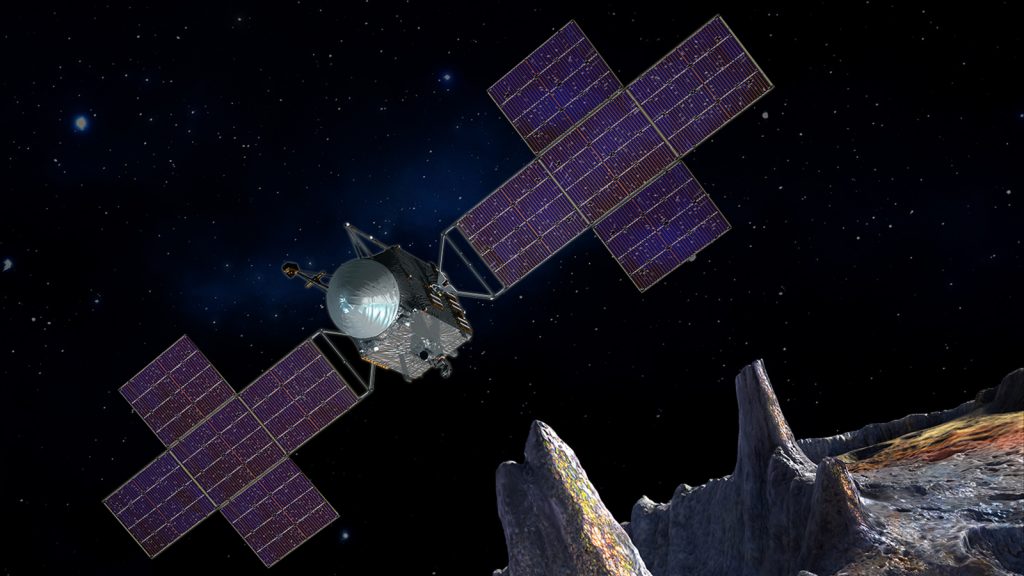
Credit: NASA
Similar to the Lucy mission the Psyche mission will explore asteroids orbiting around Jupiter as well. However, the major difference is this will be the first time scientists will have an up-close and personal look at an asteroid made up of metal! Typical asteroids are made up of rock or ice but asteroid Psyche is different. It was actually the 16th asteroid humans had discovered and it was done in 1852. What a history it has! This mission will launch in 2022 and will approach Psyche in 2026.
Learn more here: https://psyche.asu.edu
OSIRIS-REx Landing – 2023
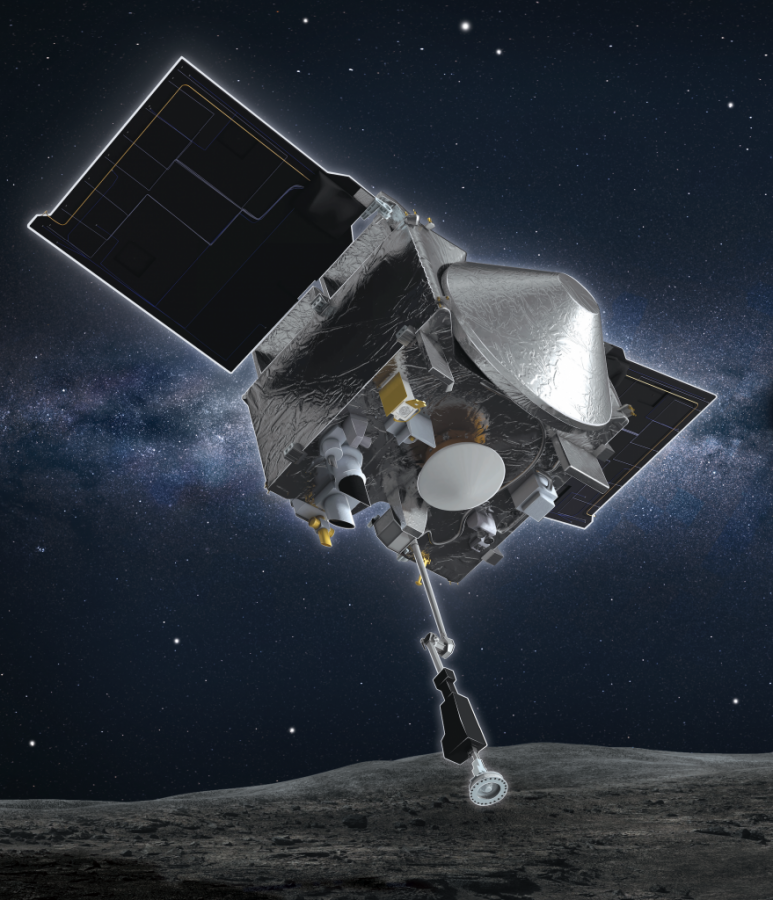
Credit: University of Arizona/NASA Goddard Space Flight Center
OSIRIS-REx is NASA’s asteroid sample retrieval mission. It’s an exciting one that will tell us the origins of our solar system. OSIRIS-REx launched in 2016 and headed to asteroid Bennu. In 2018 the spacecraft approached Bennu and started surveying the asteroid. Part of why this mission is important is the confidence in going after a target asteroid and to be able to explore it and retrieval samples and bring it back to Earth. OSIRIS-REx will retrieve the sample in 2020 and then land on Earth in 2023 concluding a 7-year journey to asteroid Bennu and back. Then the real science begins by studying Bennu!
Learn more here: https://www.asteroidmission.org/
Future European Space Agency (ESA) Missions
Characterizing Exoplanet Satellite (CHEOPS) – 2019
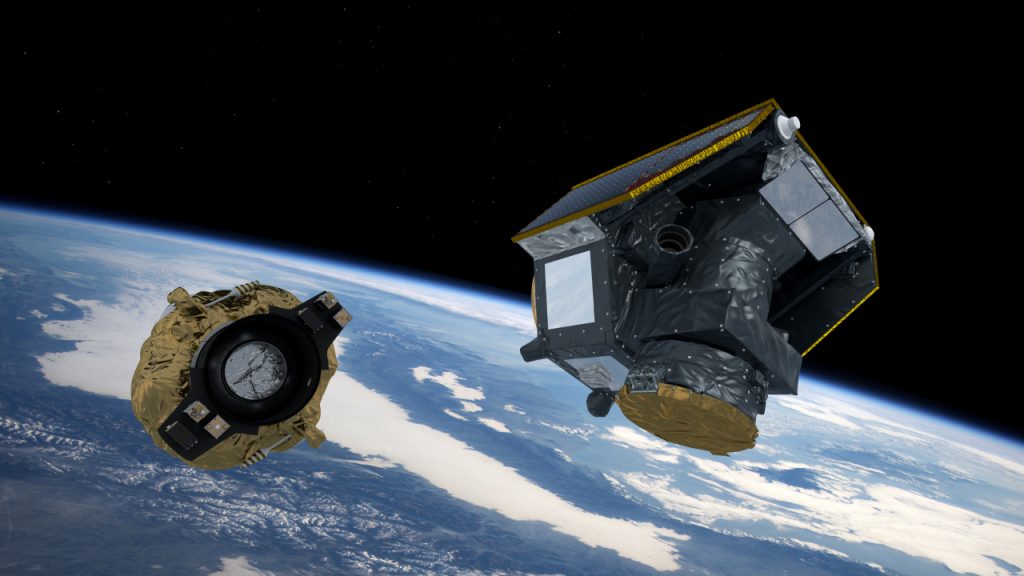
Credit: ESA
A mission called Characterising Exoplanet Satellite or CHEOPS will be launching in December of 2019. This mission comprises of a small spacecraft that packs a punch. It’s objective is to study planets around known bright stars. This will help us understand more about the types of exoplanets out there as well as future targets to send spacecrafts to explore these exoplanets further. This mission is a partnership between Switzerland and the European Space Agency programs. It’ll be amazing to see what new discoveries await us.
Learn more here: https://sci.esa.int/web/cheops/-/54030-summary
Jupiter Icy Moons Explorer (JUICE) – 2022
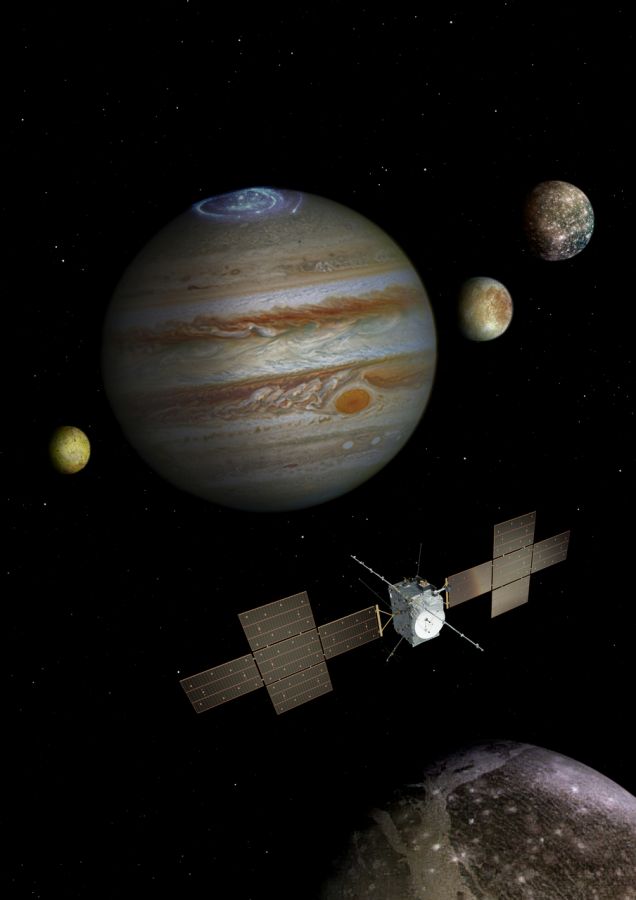
Credit: ESA
The ESA has some exciting missions coming down the pipe. Here’s a mission called Jupiter Icy Moon Explorer or JUICE. This mission is to launch in 2022 and reach Jupiter in 2029. It’ll explore Jupiter in greater detail and have an up-close and personal look at the 3 icy moons. These icy moons, Ganymede, Callisto, and Europa are all fascinating in their own right. From geysers shooting out into space to containing more water than Earth, there is so much to learn and explore. It’s thought of where there are energy and liquid water there is life. So who knows what exciting findings await us in the future.
Learn more here: https://sci.esa.int/web/juice
Euclid – 2022
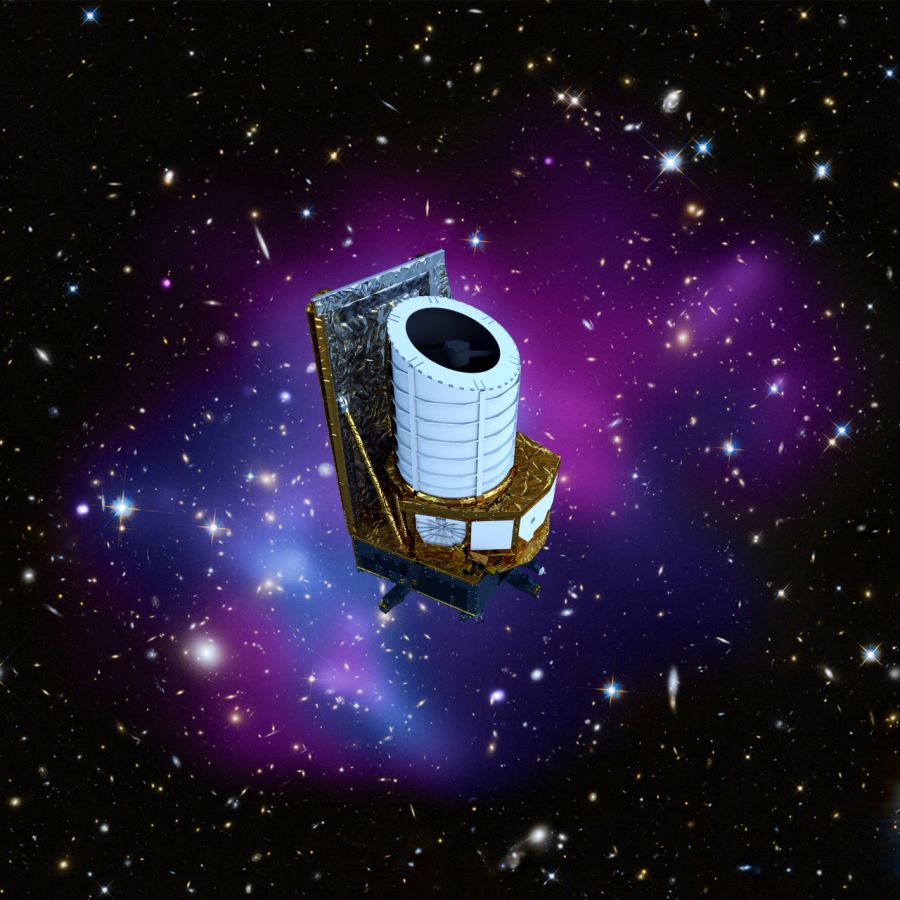
Credit: ESA
Dark matter is one of the most exciting areas of cosmology and astronomy. It makes up roughly 27%, whereas matter (stars, gas, atoms etc.) make up a mere 5% of the universe. Euclid is designed to help us understand dark matter. It will answer questions like what is the distribution of dark matter in the universe? Or what does this tell us about the nature of dark energy? These are questions on the frontier of knowledge and Euclid will help us get us there.
Learn more here: https://sci.esa.int/web/euclid/-/summary
Future Indian Space Research Organization (ISRO) Missions
Chandrayaan-3 – 2020
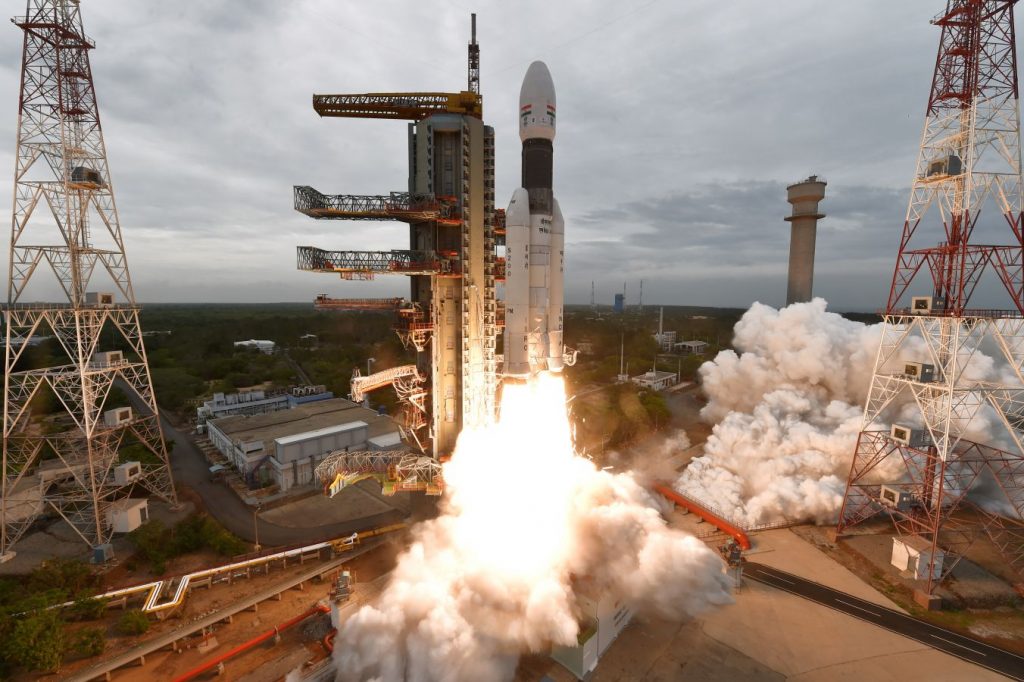
Credit: ISRO
India’s space program has been wildly impressive. They launched an orbiter to Mars in 2013 making it the most budget-efficient launch ever. However, India had their sights set on being able to contribute even further. In 2019 India launched Chandrayaan-2 to the Moon and equipped it with a lander as well. However, as with all hard things, problems arose. ISRO lost communication with the lander and was never found even with the help of NASA. Enter Chandrayaan-3. ISRO follow up mission to re-attempt the lander to showcase the capabilities needed for the Lunar Polar Exploration Mission. That mission will also be a proposed partnership with Japan.
Learn more here: https://www.isro.gov.in/missions
Gaganyaan – 2021
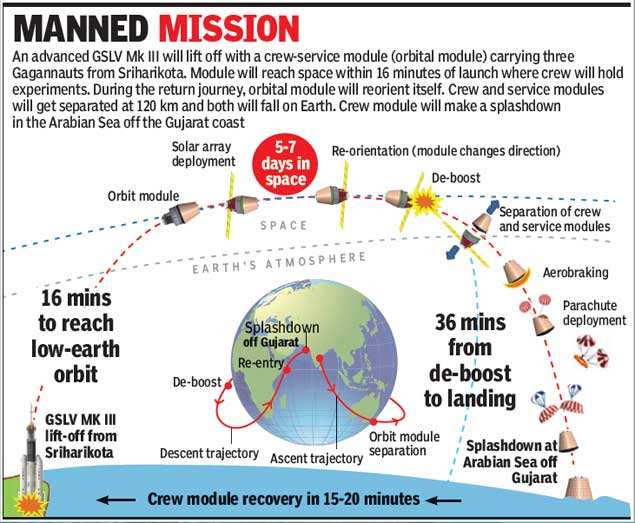
I must applaud India for pushing themselves to get humans into space. They will be the fourth country to do so after China, Russia and the U.S. This mission dubbed Gaganyaan has already been through a test flight. The next few milestones are testing the spacecraft uncrewed in space. Then by 2021/2022, they will put humans in space and make history.
Learn more here: https://timesofindia.indiatimes.com/india/union-cabinet-clears-rs-10000cr-for-indias-gaganyaan-project/articleshow/67288124.cms
Mars Orbiter Mission 2 – 2020+
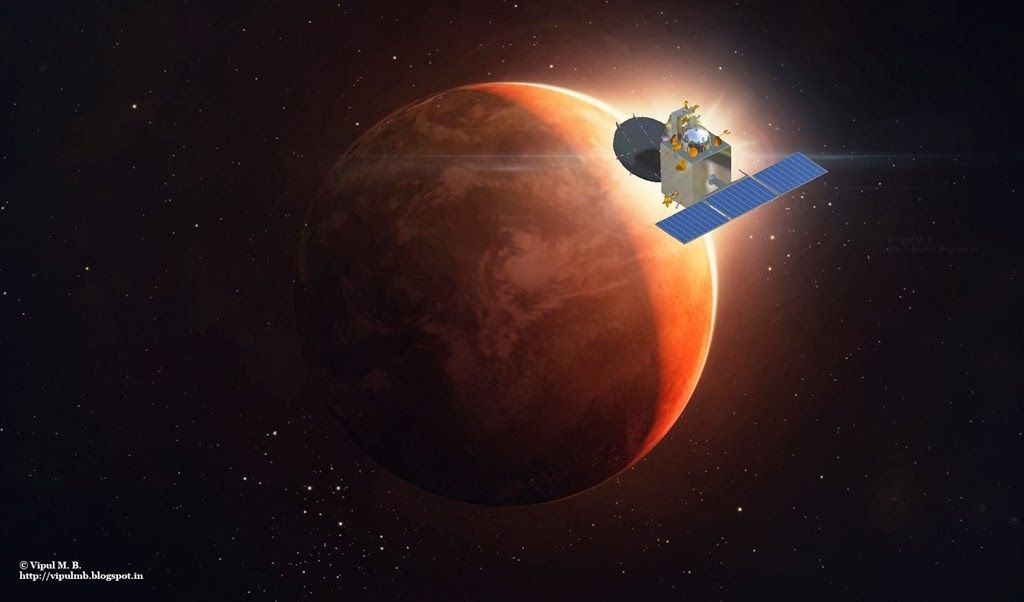
Credit: Vipul Barad
India broke some impressive records with its Mars Orbiter Mission that launched in 2013. They did it with a fraction of the budget NASA uses to get to Mars. It was also their first interplanetary mission and they nailed it on their first shot! That is absolutely impressive for a country to launch an important mission to Mars and be up there with countries that have been doing it with a lot more resources and practice. Enter the follow-up mission Mars Orbiter Mission 2. This one will even have a lander and rover to explore Mars even further. This mission still doesn’t have an official timeline at the time of this post. However, I can imagine it’ll be launched before 2025.
Learn more here: https://en.wikipedia.org/wiki/Mars_Orbiter_Mission_2
